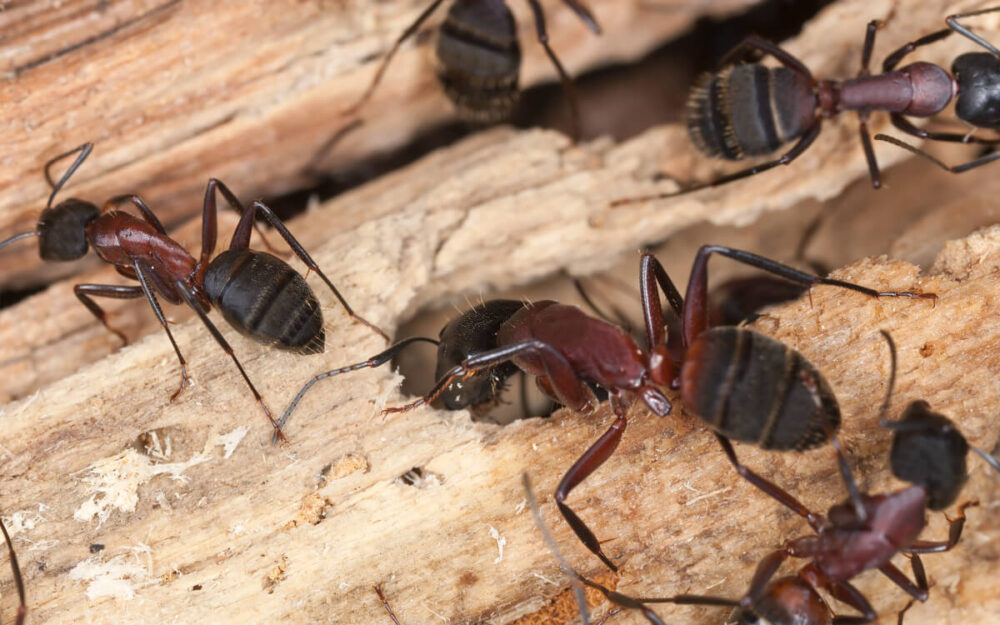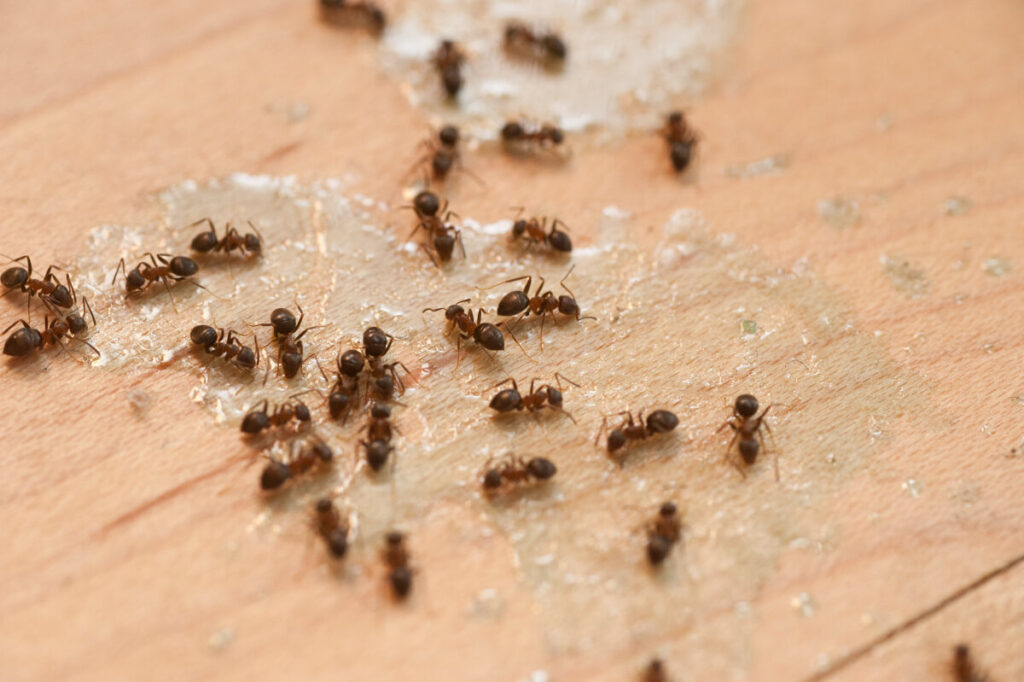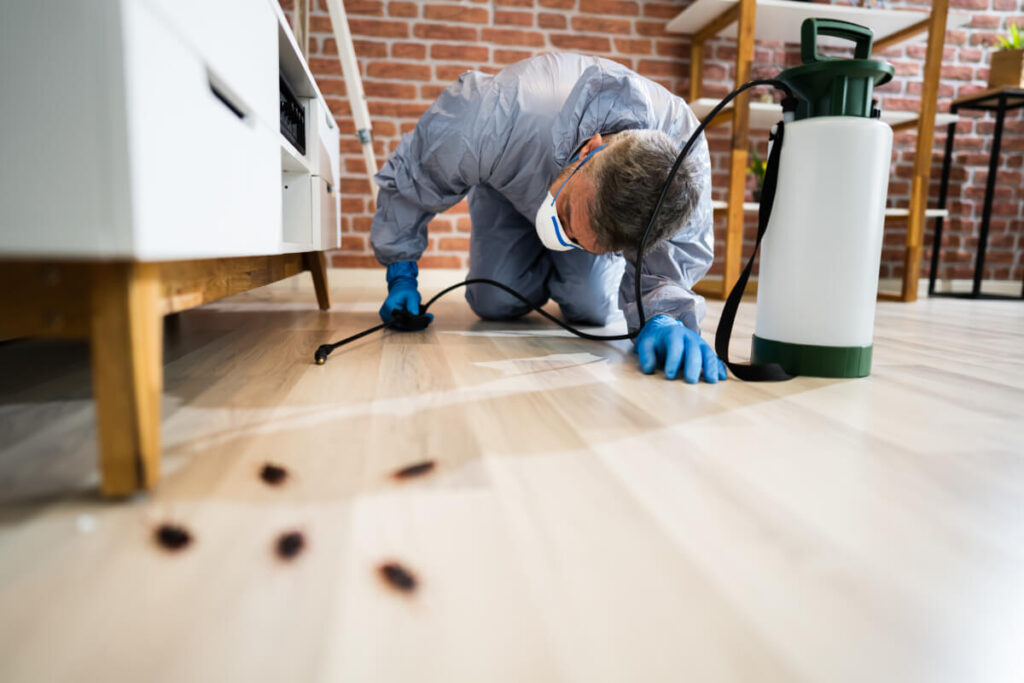
When dealing with carpenter ants, there are a wide variety of pest control methods that you can try but one of the most effective techniques is baiting. Ant baiting makes use of a non-repellent insecticide mixed with foods that worker ants are typically looking for. The main advantage of carpenter ant baits is that it can completely eradicate the entire colony but to ensure the success of this method, you need to use a special bait.
So why do you need to use special baits for the control of carpenter ant activity? Carpenter ants are picky about what they consume and they won’t just take any bait that you prepare. These ant species have a unique preference for high protein and sweet foods. There are also some readily-available carpenter ant bait products such as spray-on foam, pellets, liquid baits, and bait traps.
Carpenter ants are the most common species of ants that can be found inside the home. Once they’ve established an ant colony within your property, they can multiply really quickly and pose a real threat to your property since they are also notorious for causing millions of dollars in damage to wood structures.
While there are chemical pesticide sprays that you can use on carpenter ants, they cannot do much for eradicating the whole carpenter nest. Insecticide sprays are usually used on ant trails to kill visible worker carpenter ants on contact so it can effectively reduce their population. However, as long as the queen remains unbothered in their colony, there’s a chance that your carpenter ant problem will recur.
To solve a carpenter ant infestation, you need to take care of their nest directly. This can be done by setting up several bait stations within the vicinity of their colony. It’s especially crucial that you use the appropriate bait with the active ingredient so that the foraging ants will take it and bring it back to their queen.
When baiting carpenter ants, you need to know what type of food they prefer. Although they can be very selective in the kind of bait that they accept, carpenter ants are generally omnivores and they can feed on meat, proteins, dead insects, and sweet foods like honeydew, jelly, sugar, or syrup.
These foods are usually combined with an active toxic ingredient such as boric acid that can kill the adult workers and ultimately take care of the queen and their colony.
There are also several options for readily-available carpenter ant baits that can be bought in stores. Some of the common special ant baits are:
This is a type of contact spray that has a special foam formulation for baiting carpenter ants. This is one of the easiest baits to use because you can just spray the bait and position onto a surface or place them in a try and then put them in a location where carpenter ants can discover it. They’ll take a piece of the foam, bring it to their satellite nests, and feed it to the minor workers and their queen.
Granular baits are ant killer products that are usually placed around the carpenter ant nest or spread along their foraging trails. These tiny solid granules are typically used for controlling outdoor carpenter ant infestations. When you use this bait, the goal is to have the worker ants take the pellets and share them with the queen. This kind of ant bait is slow-acting and it can take several days for the poison to take effect on the entire colony.
These types of ant baits are specially formulated with a sweet-smelling liquid solution that will attract the worker ant. It’s one of the most efficient baits to use, especially in enclosed areas such as crawl spaces and wall voids where you can’t clearly see the carpenter ant colony. Most liquid bait products are contained in a station and you can simply open them and place them near their entry points.
The challenge with using liquid baits is that ants can’t pass on the liquid to the other members of their colony. However, they can leave behind their pheromone trails to guide the other worker ants to the bait. To ensure that this bait is effective, make sure to remove other attractive foods that will steal the attention of the carpenter ants.
Ant bait traps are small plastic devices that contain poisonous bait. They’re usually enclosed because the active bait ingredient inside is highly toxic and may be dangerous to other pets and animals. Bait traps are usually placed near the areas where the carpenter ants are nesting. They work in the same way as granular baits where the worker ants will take it and bring it back to their colonies.

The process of carpenter ant baiting can be tedious and require regular management and maintenance of the bait station. However, it’s one of the most effective and popularly used methods for carpenter ant control and extermination.
This method takes advantage of the fact that ants are social insects and they have a unique food-sharing ability. Once the worker ants discover the bait, they won’t only take it back to their nest but mark with their scent trails so that the others will find their way to the food source. While baiting is a slow process, it guarantees the elimination of the whole colony of carpenter ants.
Additionally, when you compare carpenter ant baits to other pest control methods like repellent sprays, it’s more effective in killing not only the worker ants but also the queen. There’s also a potential drawback that the ants will avoid the trails sprayed with the pesticide and migrate to other areas within your property. Applying them near their nests can also alert the queen to take the eggs to another nesting location and the workers will split to create satellite colonies.
While it’s recommended that you consult with a pest control professional for setting up bait stations, the ant baiting procedure is pretty simple and you can also do it on your own. Here are several reminders that you need to follow for effective ant baiting:
Baits will only work if the adult ants can discover the station. It’s important to know where the ants are coming from since it will most likely lead you to their hiding place. When doing indoor baiting, you can find carpenter ants traveling along window frames, baseboards, wall voids, under the sink, and hollow-core doors. You can also check outside the house and look for their parent nest on fence posts, tree limbs, tree stumps, and decaying wood.
It’s crucial to check the label of your bait product to confirm if it will work on carpenter ants. Afterward, you should carefully place the bait near areas with high ant activity or within the perimeter of their colony. Make sure that you use enough bait since ants may quickly take everything. For large carpenter ant colonies, you’d need to refill the station with fresh bait on a periodic basis to ensure you can eliminate them completely.
When you want to place baits in the kitchen, make sure that you remove competitive sources of food that can lure ants. Putting bait near trash cans, pet food, or around vegetation areas with aphids may not be effective since these sites are also abundant with the ants’ favorite foods.
During the baiting process, limit your use of repellent sprays near the ant bait stations. You should also avoid applying insecticide dust since this can alarm the worker ants and affect their usual foraging activity. However, non-repellent sprays may be used alongside baiting for long-term ant control.
The effectiveness of the bait can also depend on the season and weather conditions. Typically, a carpenter ant swarmer will come out during spring months but their workers can remain active throughout the fall. For this reason, carpenter ant bait treatments can be used during early spring when their swarmers are beginning to expand their population. You can also set them up during the late winter months when they prefer to hide and look for food indoors.
Here are some common telltale signs that you have an existing carpenter ant infestation at home:
Ant baiting works at the early stages of carpenter ant infestation and it can stop their activity before they can do further damage to your property. However, if you notice a recurring carpenter ant problem or when you have serious structural damage, it might be time to consider calling pest control companies for immediate ant extermination.

Ant baiting is the recommended pest control option that can efficiently get rid of carpenter ant colonies inside and outside the house. Our expert team at Yale Pest Control can assist you in locating carpenter ant nests and setting up baits in the right places to ensure effective extermination.
Yale Pest Control is a professional and trusted company that provides quality extermination services for all kinds of annoying insects and household pests. We are experienced in conducting comprehensive pest inspections and we can provide you with the appropriate pest management program for your specific ant problem. Contact us today for a quote or inspection.